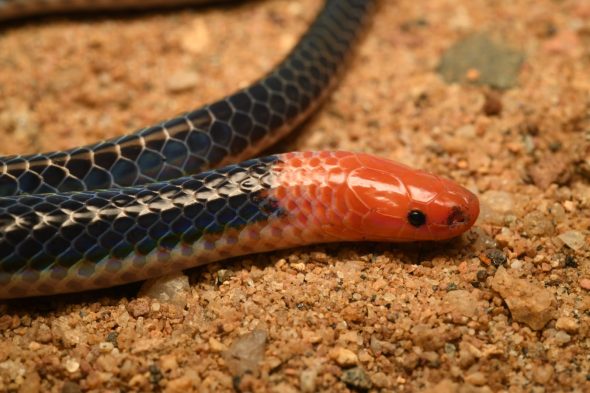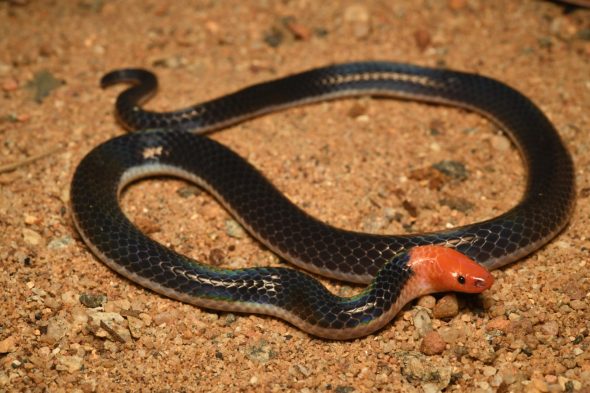Reed snakes belong to the colubrid family of snakes. Read this and this to find out more about colubrid snakes. It is native to South East Asia. This reed snake is non-venomous and grows to about 40 cm. It is nocturnal in habit, burrows underground and feeds on lizards, frogs and invertebrates amongst the leaf litter on forest floor. It has a bright pink head, black dorsally and white ventrally. It is thought that this colour pattern is a mimicry of the highly venomous blue Malayan coral snake (Calliophis bivirgatus) and the red-headed krait (Bungarus flaviceps). Read this and this to find out more about these two venomous snakes.


Video and photo credits: Francis Seow-Choen. Nature Reserve, Singapore. September 2021.
References:
- Biodiversity of Singapore: An encyclopedia of the Natural Environment and Sustainable Development © 2011 Edited by: Peter KL Ng, Richard T. Corlett and Hugh T. W. Tan
- A guide to the Amphibians and Reptiles of Singapore by Kelvin KP Lim and Francis LK Lim ©1992
- Poisonous snakes of Peninsular Malaysia by Lim Boo Liat © 1979
- https://en.wikipedia.org/wiki/Calliophis_bivirgatus
- https://en.wikipedia.org/wiki/Red-headed_krait








